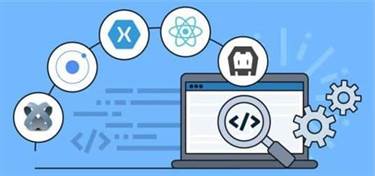Software development
Enterprise systems design resources TI com
Content
These applications allow users to interact within a single interface, share information, and enable cross-functional collaboration. Businesses employ enterprise resource planning for various reasons, such as expanding, reducing costs, and improving operations. The benefits sought and realized between companies may differ; however, some are worth noting.
- The unit-by-unit process ensures that the effort is manageable, and it also helps the team refine the system and the processes as it proceeds.
- Information technologies that integrate business functions across the enterprise, known as Enterprise Systems, have become the backbone of modern organizations.
- We also reference original research from other reputable publishers where appropriate.
- Enterprise resource planning, supply chain management and customer relationship management systems are each examples of enterprise systems.
- For example, software maintenance, facility, computer capacity, downtime, recovery, security, privacy, and IT staff costs are all important considerations.
Reporting and analytics for legacy systems typically require involvement from a third-party vendor to generate operational business intelligence. Using cloud applications from your legacy ERP vendor often produces the same or better intelligence without needing an additional vendor relationship. https://globalcloudteam.com/ ERP also ensures that these data fields and attributes roll up to the correct account in the company’s general ledger so that all costs are properly tracked and represented. For certain areas of the car service work that significantly affect the quality process of the maintenance service.
Personal tools
The required environment for a distributed simulation is generated automatically. A further experiment reveals that the method is effective to improve the design quality and reduce time cost. They impact many processes and employees of an organization and require significant organizational change. Management from data unified, resources sharing and business electronic and the management improvement of this company.

The unit-by-unit process ensures that the effort is manageable, and it also helps the team refine the system and the processes as it proceeds. For example, the second unit to implement the system found that it didn’t adequately support bulk shipments, which are the main way the unit gets its products to customers. (The first unit uses package shipping for all its orders.) The system was then modified to support bulk as well as package shipping, and the new configuration became the new standard. Compaq Computer is a good example of a company that carefully thought through the strategic implications of implementing an enterprise system.
The Difference in Traditional Campus and Online Learning Environments
THIS DEFINITION IS FOR PERSONAL USE ONLY. All other reproduction requires permission. Systems programmers and IT managers must determine when newer versions of operating systems make sense and plan how to integrate them into existing environments. The operating system sets the standard for the programs that run under it. The choice of operating system combined with the hardware platform determines which ready-made applications can be purchased to work on it.
An enterprise system is any software system that allows an organisation to operate its business and manage its data to achieve specific goals. In management theory, organisations that cannot adapt to changes in the business environment are argued to be less competitive than their adaptable counterparts. An organisation’s adaptability is influenced by the adaptability of its ES. An adaptable ES should allow the incorporation of changes that align with evolving business goals and unforeseen marketplace disruptions. In this work, we present an empirical study exploring current views on ES adaptability, which supports the hypothesis that ES adaptability is viewed as critical. We find that more choices in adaptable ESs are desirable and favourable, and that an adaptable ES is a critical requirement for the long-term survival of organisations.
Experience Applications conferences
Most ERPs also include customer relationship management tools to track customer interactions, thereby providing deeper insights about customer behavior and needs. They can also standardize and automate manufacturing and supporting processes, and unify procurement across an organization’s business units. A complete ERP suite also includes enterprise performance management, software that helps plan, budget, predict, and report on an organization’s financial results. For example, enterprise resource planning supports the entire sales process that includes pre-sales activities, sales orders, inventory sourcing, deliveries, billing and customer payments. Enterprise resource planning, supply chain management and customer relationship management systems are each examples of enterprise systems.

By collecting an organization’s shared transactional data from multiple sources, ERP systems eliminate data duplication and provide data integrity with a single source of truth. The model results are evaluated and sensitivity analyses are conducted in an effort to enhance the model applicability. The case study provides management with valuable insights for planning and controlling health-care activities and services.
Enterprise ERP
A Java-based enterprise system architecture for implementing a continuously supported and entirely Web-based exercise solution. Based on project business, its distinguishing features include the interconnectedness of business subsystems and the overlapping a hotel enterpriseâs business function. It is all ready installed within a hospital, supporting health types of enterprise systems and safety management among different departments of the hospital and allowing communication through WEB with other hospitals. A site of communication among enterprises for supporting occupational health and safety management system . Business process is specified by the user, including a specification of the objects exchanged between the local models.

Management strategy is presented, in which the groups of process indicators are allocated and the balanced scorecard for the process groups are developed. And provides proper insurance for the overall target of risk management. Operates in the mining industry, and HS, a subsidiary of the largest retailer in Asia with more than 700 stores in Indonesia.
ERP integration
The plan enables you to determine whether you are working towards achieving your goals or not. You can monitor overall service and customer satisfaction, expenses, and how production is coming along. You will also get notified of potential inventory problems that enable you to make the necessary changes in time. From a hardware point of view, enterprise systems are the servers, storage and related programming software that large organizations use as the establishment for their IT infrastructure. These frameworks are intended to oversee extensive volumes of critical information.
